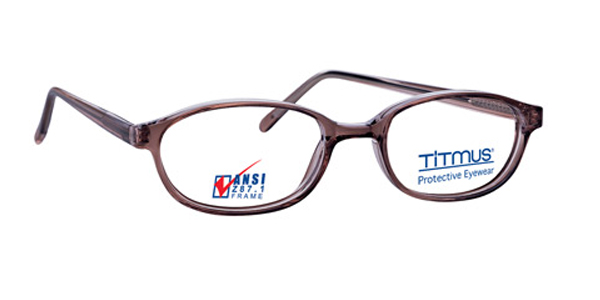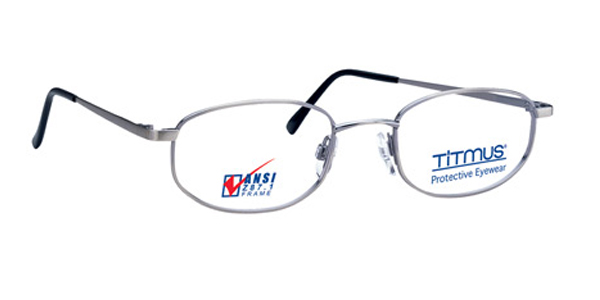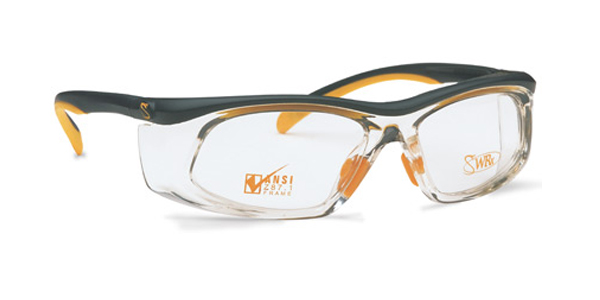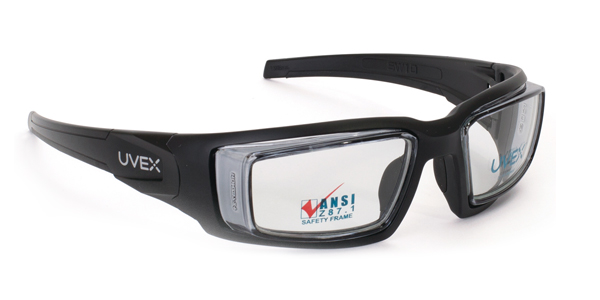Work Safe
As part of our continued commitment to provide industry standard and affordable eye-wear to you, we are proud to introduce our line of Safety Eye-wear. Get your entire company compliant with prescription safety glasses. Safety is serious business, and it’s important that certifications are regulated and enforced. Employers now choose Z87 safety glasses that best represent the hazards found in the workplace, such as:
- Blunt impact
- Radiation
- Splashes and droplets
- Dust
- Small dust particles
ANSI Z87 certified safety glasses undergo intensive testing that ensures they’ll stand up when your eyes need it most. Tests include the ability for Z87 safety glasses to protect us from non-ionizing radiation, impact to the eyes, and exposure to chemicals, whether it be at work, school or home.
Preventing Eye Injuries
Our Safety Frame Collection
Learn More
Safety eyewear must conform to a higher standard of impact resistance than regular eyeglasses, which optical professionals sometimes call “dress eyewear.” This higher standard applies to both the lenses and the frames of safety glasses and goggles.
Safety glasses may have prescription lenses or non-prescription (also called “plano”) lenses. Regardless of their size or the durability of the frame and lenses, regular prescription eyeglasses do not qualify as safety glasses unless they meet specific criteria.
In the United States, the federal government establishes safety guidelines for workplaces, to decrease the risk of on-the-job injuries. The Occupational Safety and Health Administration (OSHA) within the U.S. Department of Labor oversees safety practices in the workplace and in educational settings.
OSHA has adopted safety eyewear standards established by the American National Standards Institute (ANSI), a private, non-profit organization that creates quality and safety standards for a wide variety of products.
The ANSI standard applying to eye safety includes several types of eye protection devices, including eyeglasses (both prescription and non-prescription), goggles, face shields, welding helmets and full-face respirators.
ANSI safety eye-wear standards include the following key features:
For the basic impact tests, lenses are tested separately (not mounted in a frame). For the high impact classification, the frame and lenses are tested together as a unit.
Non-prescription lenses used for high impact testing are considered to be structurally weaker than prescription lenses made of the same material; the prescription lenses are generally thicker.
Thinner prescription safety lenses are now allowed, if they meet the high impact testing requirements. (Previously, all prescription safety lenses had to have a minimum thickness of 3 mm, making them significantly thicker and heavier than regular eyeglass lenses.)
Safety lenses now have two classifications of performance: basic impact and high impact.
The “drop ball” test determines the basic impact safety classification for lenses. In this test, a one-inch diameter steel ball is dropped onto the lens from a height of 50 inches. To pass, the lens must not crack, chip or break.
All glass safety lenses must undergo this test. For plastic safety lenses, however, only a statistical sample of a large batch of lenses needs to be tested.
In high impact testing, a high velocity test is performed by shooting a quarter-inch diameter steel ball at the lens at a speed of 150 feet per second. To pass, the lens must not crack, chip or break, and it must not become dislodged from the lens holder.
Your company’s safety officer should determine which level of protection (basic impact or high impact) is needed for your job duties.
Please click here for a video about how to prevent eye injuries at work, at home, and during sports.
This video explains how to prevent eye injuries at home, at work and during sports.
A few occupations requiring high impact protection in eyewear include:
- Carpenters
- Plumbers and pipe fitters
- Machinists
- Millwrights
- Laborers
Some activities may require side shields, goggles or full face protection. Employers and safety officers should consult OSHA to help determine which type of safety eyewear is most appropriate for different job positions. To learn more, visit the eye and face protection section of OSHA’s website. If you work as an independent contractor, it’s best to choose safety eyewear that has been rated at the high impact standard for all activities, just to be extra safe.





